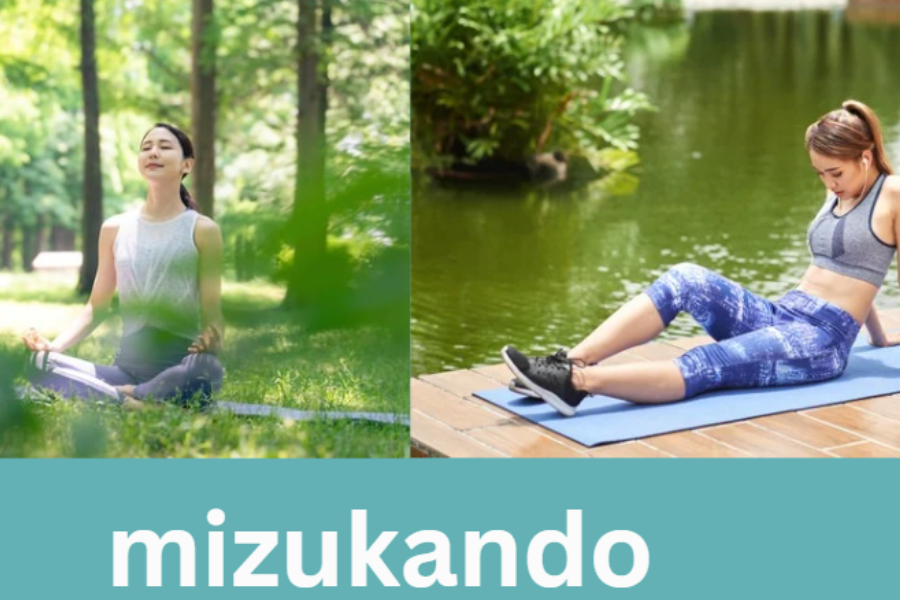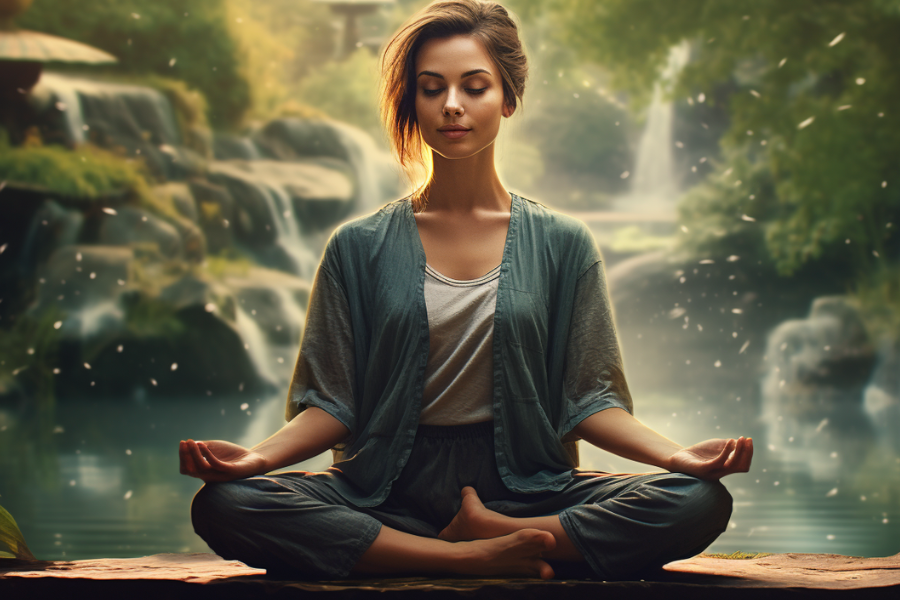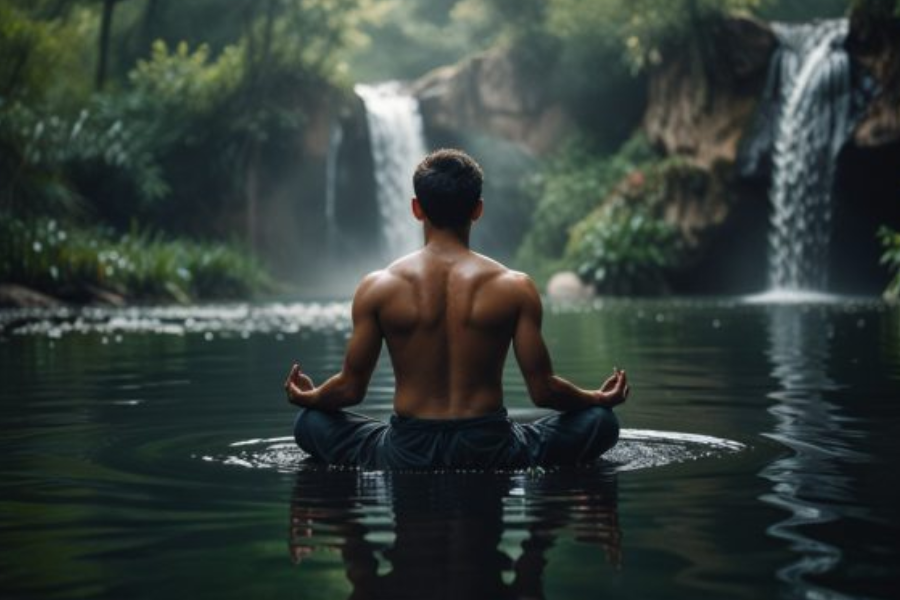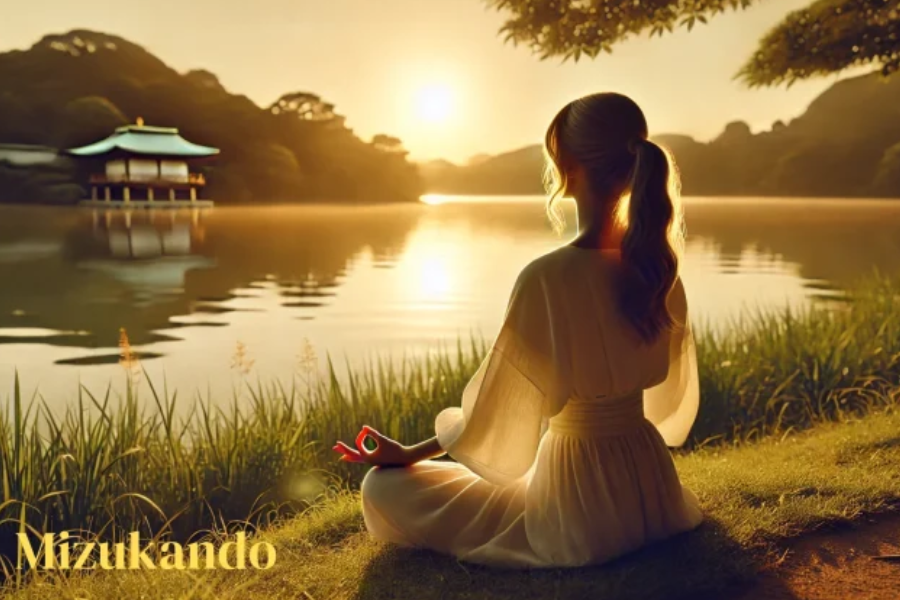The Art Of Mizukando: A Blend Of Tradition And Modernity
Mizukando is a captivating Japanese art form that combines traditional craftsmanship with contemporary design aesthetics. Rooted in centuries-old techniques, Mizukando embodies the spirit of Japan’s cultural resilience, adapting to modern influences while maintaining its deep connection to the past. This unique art form is celebrated for its attention to detail, precision, and the harmonious balance between natural materials and modern design trends.
In this article, we will explore the history, techniques, and cultural significance of Mizukando, highlighting its evolution from ancient craftsmanship to its modern-day applications. Additionally, we will examine how this has gained international recognition, especially in the USA, where its blend of tradition and innovation resonates strongly with audiences seeking unique and meaningful art.
Historical Roots Of Mizukando: A Fusion Of Nature And Spirituality

Mizukando traces its origins to ancient Japan, where the religious philosophies of Shintoism and Buddhism profoundly shaped architectural and design practices. In Shintoism, nature was revered as sacred, with water symbolizing purity and renewal. As temples and shrines began to emerge, the thoughtful integration of water within these sacred spaces became an essential feature, reflecting the belief in “shinrabansho,” or the interconnectedness of all things in nature. This principle laid the foundation for Mizukando’s focus on harmonizing natural elements with human environments.
With the introduction of Zen Buddhism, the importance of water in Japanese design grew even more pronounced. Zen gardens, known for their peaceful ponds, trickling streams, and artfully arranged stones, were created to inspire meditation and spiritual reflection. Water, both seen and heard, became a vital component of these tranquil landscapes, reinforcing the ideals of serenity and inner peace that Zen philosophy encourages. This spiritual and aesthetic legacy continues to influence this, as the art form emphasizes water’s natural beauty and calming properties in its designs.
The Science Of Water Meditation: Enhancing Well-Being through Mizukando
Scientific studies reveal that water has a calming and restorative effect on the human mind. Time spent near water can reduce cortisol levels, the hormone associated with stress, while boosting serotonin, the “feel-good” hormone. By harnessing these natural benefits, Mizukando amplifies the therapeutic effects of water through intentional meditation practices.
In this, practitioners are encouraged to synchronize their breathing with the rhythm of water, fostering a deeper connection between the mind and body. This mindful synchronization enhances the meditative state, allowing individuals to fully immerse themselves in the moment. Additionally, engaging with water during meditation activates the brain’s default mode network, which is linked to self-awareness and introspective thinking.
The Stress-Relieving Benefits Of Mizukando
Mizukando provides powerful mental and emotional benefits, particularly in stress relief. The art form’s integration of water creates a calming environment that naturally lowers anxiety. This mindful practice encourages relaxation, making it an effective tool for managing the everyday stresses of modern life.
Physical Relaxation and Enhanced Well-Being
Focusing on water during Mizukando meditation helps clear away mental clutter, allowing for a deeper state of relaxation. By centering the mind on the present moment, stress is reduced, leaving individuals feeling more peaceful and in control. Over time, regular practice can improve stress management, helping practitioners navigate life’s challenges with greater ease.
Techniques Of Mizukando: Blending Tradition With Innovation

The craftsmanship of Mizukando is a delicate balance of skill, tradition, and creativity. While artisans rely on age-old Japanese tools and techniques, they also embrace modern materials and technologies to keep the art form relevant. Each piece of Mizukando is carefully crafted to embody both the heritage of Japanese design and the innovative spirit of contemporary artistry.
Integrating Water Elements and Traditional Materials
A signature aspect of this is the integration of water or water-like elements into the design. Artisans achieve this through techniques such as using reflective surfaces, mimicking water patterns on materials, or incorporating real water features. These methods create a sense of fluidity and movement, capturing the essence of water in a visually static form. In tandem with this, traditional Japanese materials like wood, bamboo, and washi paper are often used. These natural materials complement the water elements, grounding the artwork in Japanese culture while enhancing its organic aesthetic.
Modern Innovations in Mizukando
Although Mizukando is deeply rooted in tradition, contemporary artists continually expand their boundaries by incorporating modern materials like glass, metal, and acrylics. Additionally, technology such as LED lighting and interactive features have been integrated, allowing the art form to adapt to modern interior design and architectural trends. These innovations have broadened Mizukando’s appeal, making it accessible to a global audience and ensuring its place in the future of artistic craftsmanship.
How To Begin Your Mizukando Practice
Starting your Mizukando journey is simple and doesn’t require any special equipment. The first step is to find a quiet space where you can focus on the sound of water. The key is to have a water element that can serve as your focus during meditation.
Once you’ve chosen your spot, sit comfortably and close your eyes. Begin by taking deep, calming breaths, allowing your body to relax. If your thoughts start to drift, gently redirect your attention back to the sound of the water. This focused meditation will help you tap into a sense of peace and calm.
You don’t need to spend long periods meditating to feel the benefits. Start with just a few minutes each day, gradually increasing the time as you become more comfortable with the practice. With consistency, this will naturally become a relaxing and rewarding part of your daily routine.
Mizukando: A Beginner’s Guide To Water Meditation

Mizukando is an easy and accessible meditation practice for beginners, focusing on the natural element of water. Unlike other forms of meditation that require specific postures or complex techniques, Mizukando’s simplicity makes it an ideal starting point.
Finding Your Space
To begin, choose a quiet space where you can focus on the sound of water. This could be outdoors near a stream or pond, or even indoors with a small water feature like a fountain. The key is to have a water source that you can listen to during your meditation.
Starting Your Practice
As you begin, concentrate on the sound of the water, letting it guide your thoughts and help you release tension. If your mind starts to wander, gently bring your focus back to the water.
Mizukando: The Perfect Meditation For Nature Lovers
For those who are passionate about nature, Mizukando is an ideal meditation practice that fosters a deep connection with the natural world. Through the calming presence of water, this practice allows nature lovers to feel grounded and centered. Whether meditating by a river, lake or even in a garden with a small fountain, this helps you tune into the rhythms of nature, enhancing both your mental well-being and sense of connection to the earth.
Deepening Your Connection with Nature
The soothing sound of water is central to Mizukando, making it a perfect fit for those who find peace in nature. As the gentle flow of water quiets the mind, it allows practitioners to focus fully on the present moment. This immersion in nature during meditation creates a sense of calm and promotes well-being, making Mizukando an enriching practice for nature lovers.
Bringing Nature Indoors
Even if you don’t have access to a natural water source, Mizukando can still provide its benefits indoors.This makes Mizukando a versatile meditation practice that can bring the tranquility of nature into any space.
The Spiritual Connection Between Mizukando And Water
In Mizukando, water holds a profound spiritual significance beyond its physical presence. Representing purity, renewal, and the endless flow of life, water becomes a central element that deepens the meditative experience. This spiritual connection with water allows practitioners to not only feel more in tune with nature but also with their inner selves. The flowing water in Mizukando serves as a reminder of life’s constant change, encouraging a state of mindfulness and inner peace.

Water as a Symbol of Renewal and Flow
Water’s symbolism in Mizukando reflects its cleansing and transformative qualities. Just as water adapts and flows, Mizukando teaches practitioners to embrace life’s changes, encouraging acceptance and peace in the present moment. This spiritual bond with water makes the practice a powerful tool for personal growth, offering not just relaxation but also an opportunity for deeper spiritual reflection.
Enhancing Connection with the World
Mizukando also nurtures a sense of connection to the world around you. By focusing on water, you develop a heightened awareness of the interconnectedness of all things. This awareness fosters a sense of gratitude and appreciation for nature and life itself, making Mizukando an enriching practice for both the body and spirit.
Mizukando vs. Traditional Meditation: What Sets It Apart
Mizukando stands out from traditional meditation practices by focusing on the calming presence of water. While many forms of meditation emphasize breathing exercises, visualization, or repeating mantras, Mizukando centers around the sensory experience of water. This unique approach offers a refreshing, natural path to peace and relaxation, making it a distinctive practice compared to more conventional meditation techniques.
Engaging the Senses
A key difference in Mizukando is its use of sensory engagement. The gentle sounds and movements of water play a central role in the practice, providing a soothing environment that helps clear the mind and promote relaxation. This sensory focus makes Mizukando especially appealing to those who may struggle with more abstract or mentally focused meditation methods, offering a more tangible way to ease into mindfulness.
A Deep Connection to Nature
Another aspect that sets Mizukando apart is its deep connection to nature. By incorporating water into meditation, practitioners establish a meaningful link to the natural world, which enhances the sense of well-being and inner peace. This connection to nature, which is less emphasized in many traditional meditation practices, makes Mizukando a truly enriching and unique experience.
Creating A Tranquil Mizukando Space At Home

Setting up a peaceful Mizukando space at home can significantly enhance your meditation experience. Start by selecting a quiet area where you can sit comfortably and undisturbed. This could be a cozy corner of a room, a spot by a window, or an outdoor space in your garden. The key is to choose a location where you can focus solely on the sound of water without interruptions.
Adding and Enhancing Water Features
Incorporate a water feature to bring the essence of Mizukando into your space. Options include a small indoor fountain, a simple bowl of water, or even a recording of flowing water if you don’t have access to a live source. The quality of the water sound is crucial, so ensure it’s soothing and clear. To further enhance the atmosphere, consider adding soft lighting, calming scents, or comfortable cushions to make the space inviting and serene. This setup will help you fully immerse yourself in your practice, making it easier to incorporate Mizukando into your daily routine.
The Healing Power Of Water In Mizukando
Water’s healing properties are central to Mizukando, where its natural calming effects are harnessed to enhance physical and mental well-being. The gentle sound of water helps to lower stress and anxiety, creating a soothing environment that facilitates relaxation and rejuvenation. By focusing on water during meditation, you can access its tranquil energy, which promotes a deeper sense of calm and peace.
Physical and Emotional Restoration
In Mizukando, water symbolizes purification and renewal. Just as water cleanses the body, it also helps to clear the mind of negative thoughts and emotions, making it an effective tool for emotional healing. This practice provides a safe space for releasing stress and achieving inner tranquility. Physically, the presence of water aids in improving circulation and reducing muscle tension. The act of sitting quietly and listening to water can lower heart rate and induce deep relaxation, offering a holistic approach to healing that benefits both body and mind.
Incorporating Mizukando Into Your Daily Routine
Adding Mizukando to your daily routine is simple and effective. Start by dedicating just a few minutes each day to your practice, whether in the morning to begin your day with tranquility or in the evening to unwind before sleep. Consistency is key, so aim to make Mizukando a regular part of your schedule to fully reap its benefits.
Pairing with Other Activities
To seamlessly integrate Mizukando into your daily life, consider pairing it with other activities. For instance, you might practice Mizukando while enjoying a bath or spending time in your garden. The natural presence of water in these settings enhances the meditation experience, making it easier to relax and focus.
Creating Personal Rituals
Enhance your Mizukando practice by establishing small rituals. Light a candle, play soft music, or take a few deep breaths before you start. These rituals create a calming atmosphere and signal to your mind that it’s time for reflection and relaxation, making your Mizukando practice a cherished and enriching part of your routine.
Enhancing Mindfulness And Focus With Mizukando
Mizukando is a valuable practice for boosting mindfulness and focus. By concentrating on the soothing sound of water, you train yourself to stay fully present in the moment, which is the core of mindfulness. This focus helps clear your mind of distractions, making it easier to concentrate on whatever task you are engaged in. The practice of returning your attention to the sound of water when your mind wanders strengthens your ability to maintain concentration.
Improving Focus and Transferable Skills
Regular practice of Mizukando can enhance your focus in other areas of life. The skills developed through meditation—such as deep concentration and the ability to redirect your attention—apply to daily activities like work or study. By incorporating Mizukando into your routine, you can improve your overall ability to stay engaged and productive.
Developing Greater Awareness
Mizukando also fosters a heightened awareness of your thoughts and emotions. By tuning into the flow of water, you become more aware of the flow of your mind, allowing you to better recognize and manage distractions. This increased awareness supports better decision-making and helps you approach life with greater balance and clarity.
Exploring The Cultural Roots Of Mizukando
Mizukando is deeply rooted in Japanese culture, where water is celebrated as a symbol of purity, renewal, and spiritual cleansing. This practice is closely tied to Shinto and Buddhist traditions, where water plays a central role in rituals meant to purify both body and soul. These cultural associations provide mizukando with profound significance, elevating it beyond a simple meditation technique to a practice rich in spiritual meaning.
Historical Significance and Spiritual Practices
Historically, mizukando was embraced by monks and spiritual leaders who sought a deeper connection with nature and the divine through water. They would meditate near rivers, waterfalls, and other natural water sources, using the sound and presence of water to enhance their spiritual practice. This historical connection to nature and spirituality continues to be a fundamental aspect of mizukando, influencing its practice today.
Enhancing Your Practice Through Cultural Understanding
Understanding the cultural roots of mizukando enriches your appreciation of the practice. By delving into its historical and spiritual significance, you gain a deeper connection to the tradition and a greater sense of purpose in your meditation. This cultural awareness adds a meaningful dimension to mizukando, making it a more fulfilling and profound experience.
Mizukando For Emotional Well-Being: Finding Balance Through Water

Mizukando is a powerful practice for enhancing emotional well-being. The calming effect of water helps to balance emotions, making it easier to manage stress, anxiety, and other emotional challenges. By focusing on the soothing sounds of water, you create a tranquil environment that promotes a sense of safety and grounding, allowing you to find inner peace.
Encouraging Emotional Release and Clarity
Mizukando facilitates emotional release by allowing the flow of water to metaphorically wash away negative thoughts and feelings. This practice helps to clear the mind, leaving you with a renewed sense of clarity and calm. It is particularly beneficial during periods of stress or emotional upheaval, offering a gentle method for processing and letting go of difficult emotions.
Fostering Joy and Contentment
Beyond emotional balance, mizukando can also enhance your sense of joy and contentment. The connection to nature and the serene atmosphere created by the water can uplift your spirits, fostering a more optimistic outlook. Integrating mizukando into your routine helps cultivate a balanced, resilient mindset, contributing to overall emotional well-being.
The Growing Popularity Of Mizukando Around The World
Mizukando is rapidly gaining global recognition as more people discover its unique benefits. This Japanese meditation practice offers a fresh, nature-based approach to achieving peace and relaxation, making it increasingly popular among diverse audiences. From wellness retreats to online meditation communities, Mizukando is becoming a favored choice for those seeking a deeper connection with nature and themselves.
Simplicity and Accessibility
One of the key factors behind Mizukando’s growing appeal is its simplicity. Unlike other meditation practices that may require specific techniques or elaborate setups, Mizukando can be practiced almost anywhere. Whether you reside in a bustling urban environment or a serene rural area, you can easily incorporate Mizukando into your routine with just a small water feature, making it accessible to a wide range of people.
Reconnecting with Nature
The rising interest in nature-based practices is also driving Mizukando’s popularity. As individuals seek ways to reconnect with the natural world amid modern life’s stresses, Mizukando offers an ideal combination of meditation and nature. This trend suggests that Mizukando will continue to attract followers globally, providing a soothing retreat from daily pressures.
Mizukando: Stories Of Transformation And Inner Peace
Mizukando has led to profound personal transformations for many individuals, helping them achieve significant improvements in mental and emotional well-being. Stories of those who have embraced this practice illustrate its powerful impact, from alleviating stress to fostering inner peace. These accounts highlight how a simple practice like mizukando can make a meaningful difference in people’s lives.
Personal Journeys of Change
Take Hana, for instance, who discovered mizukando during a particularly stressful phase. The soothing effect of water helped her to relax and clear her mind, enabling her to approach her challenges with newfound clarity and confidence. Regular practice not only reduced her anxiety but also brought her a profound sense of inner peace that she had previously struggled to find.
Creative Inspiration and Growth
Similarly, Kenji, a graphic designer, found that mizukando enhanced his creativity. The flowing movements of water stimulated new ideas and helped him overcome creative blocks. By integrating mizukando into his routine, Kenji tapped into a deeper well of inspiration, leading to greater success and satisfaction in his work.
These personal stories demonstrate the transformative potential of mizukando. Whether you seek to manage stress, boost creativity, or simply find a moment of tranquility, mizukando offers a powerful and accessible way to enrich your life.
FAQs About Mizukando
What is Mizukando?
Mizukando is a Japanese meditation practice that uses the calming presence of water to promote relaxation and inner peace.
How do I practice Mizukando?
Find a quiet space, sit comfortably, and focus on the sound of water, either from a natural source or a small indoor fountain. Breathe deeply and let the water’s sound guide your meditation.
Can Mizukando be done indoors?
Yes, you can practice Mizukando indoors using a small fountain or a bowl of water to create a calming environment.
What are the benefits of Mizukando?
Benefits include reduced stress, improved emotional balance, enhanced creativity, and increased mindfulness.
Is Mizukando suitable for beginners?
Yes, Mizukando is beginner-friendly due to its simplicity and accessibility. No special techniques or equipment are required.
How can I include Mizukando in my daily routine?
Practice Mizukando for a few minutes each day, either in the morning or evening. You can also integrate it with other relaxing activities like baths or time in your garden.
Conclusion
Mizukando represents a harmonious blend of traditional Japanese art and modern meditation practices, offering a unique pathway to emotional and mental well-being. Rooted in the rich spiritual and cultural heritage of Japan, this practice harnesses the calming power of water to foster relaxation, clarity, and joy. As Mizukando gains global popularity, its simplicity and deep connection to nature make it an accessible and effective practice for anyone seeking a more balanced and serene life.
Whether you’re looking to manage stress, enhance creativity, or simply find a moment of peace, Mizukando provides a refreshing and meaningful way to enrich your daily routine. By integrating this practice into your life, you can tap into the profound benefits of water and experience a deeper connection to both nature and yourself.
Stay in touch for more updates and alerts visit: England Breaking!






